The Pleasure of Old Travel Guides – Part II
Guides to Italian inns and b&bs, the red Michelin with recommended restaurants and hotels in cities and larger towns, guides to specific provinces like Umbria or the Veneto, and some for wineries fill a couple of my bookshelves. But there are three that I keep separate, not for their usefulness, but for their historical interest. I love to thumb through them for insights into the past: one from the early 1900s, one from the 1950s, and the third a guide to one of Italy’s colonial possessions – that in East Africa.
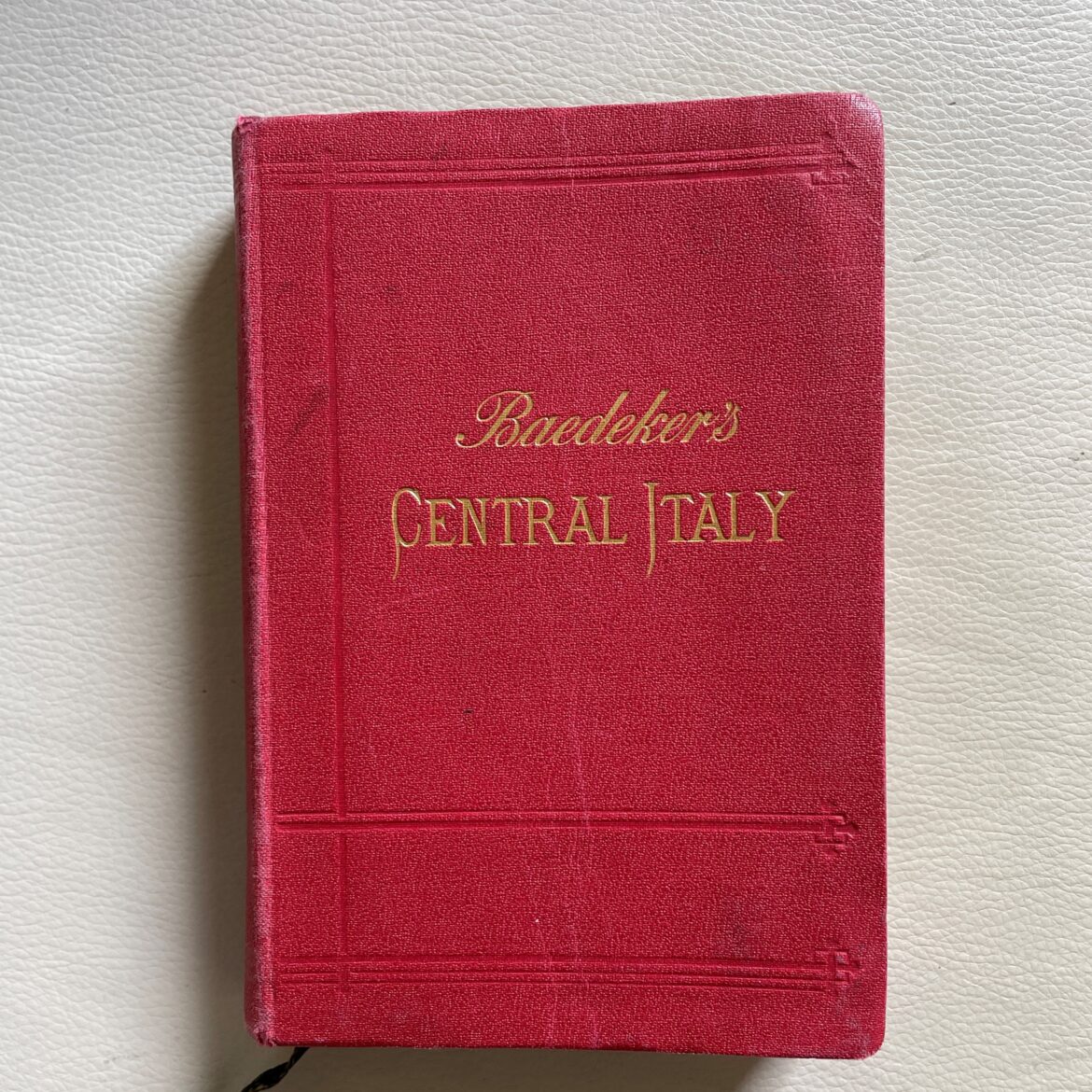
Baedeker’s guides were a vital part of tourists’ baggage in the late 1800s early 1900s. Lucy Honeychurch missed hers when she was lost in Florence’s Santa Croce cathedral. Without it she became overwhelmed by the glories of the Renaissance in E.M. Forster’s delightful novel Room With a View. The book, published in 1908, is a classic as is the 1985 film starring Helena Bonham Carter.
I’d like to think Lucy and her traveling companion used my copy of the Baedeker which centers on Rome as they continued their tour of Italy. Published in 1904, it’s already the 14th edition, a testament to the craze for travel to Italy for Brits and Americans.
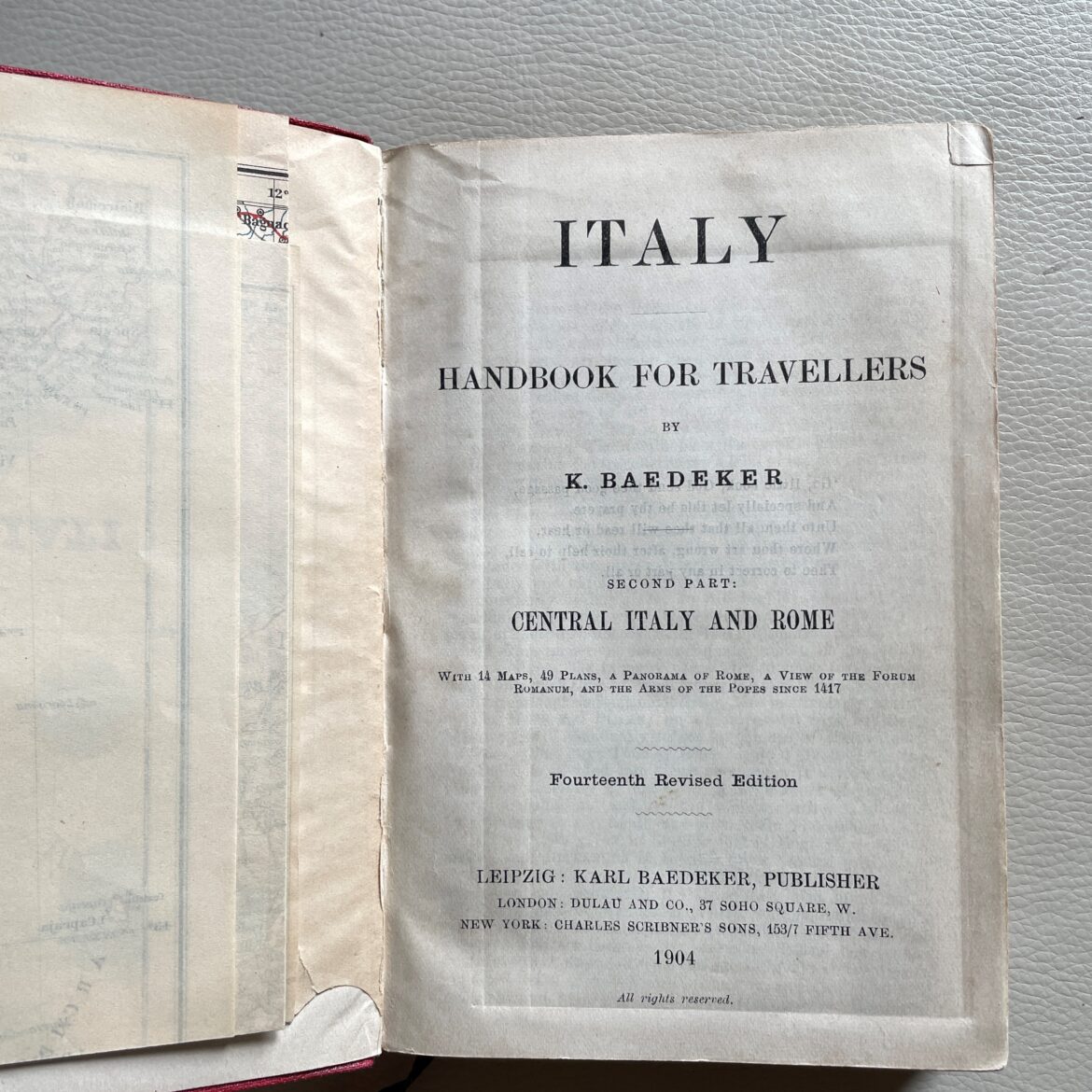
Like all guides it’s full of history, timelines and advice such as “Trattoria are chiefly frequented by Italians and gentlemen traveling alone, but those of a better class may be visited by ladies also.” Regarding health, it warns that malaria can be contracted in areas beyond the Vatican and near Saint Paul Without the Walls. Travelers further outside Rome must ensure they are home before sunset to avoid the malaria-carrying mosquitoes. Summer visitors are reminded that only dogs and English walk in the sun!
Besides hotels, some of which are still in business, there are addresses for parasol vendors, upholsters, photographers, art studios, sick nurses, baths, and lieux d’aisance. I had to look that up – it means public toilets for the prudish tourist. (Delicate speech for “going to the loo”?
But what is truly fascinating are the beautiful maps and descriptions of the Palatine Hill, Colosseum and Forums along with a diorama (with so many fold-out pages I could only photograph a few) as the rooftops of Rome were at the time. The one below is of the Aventine Hill.
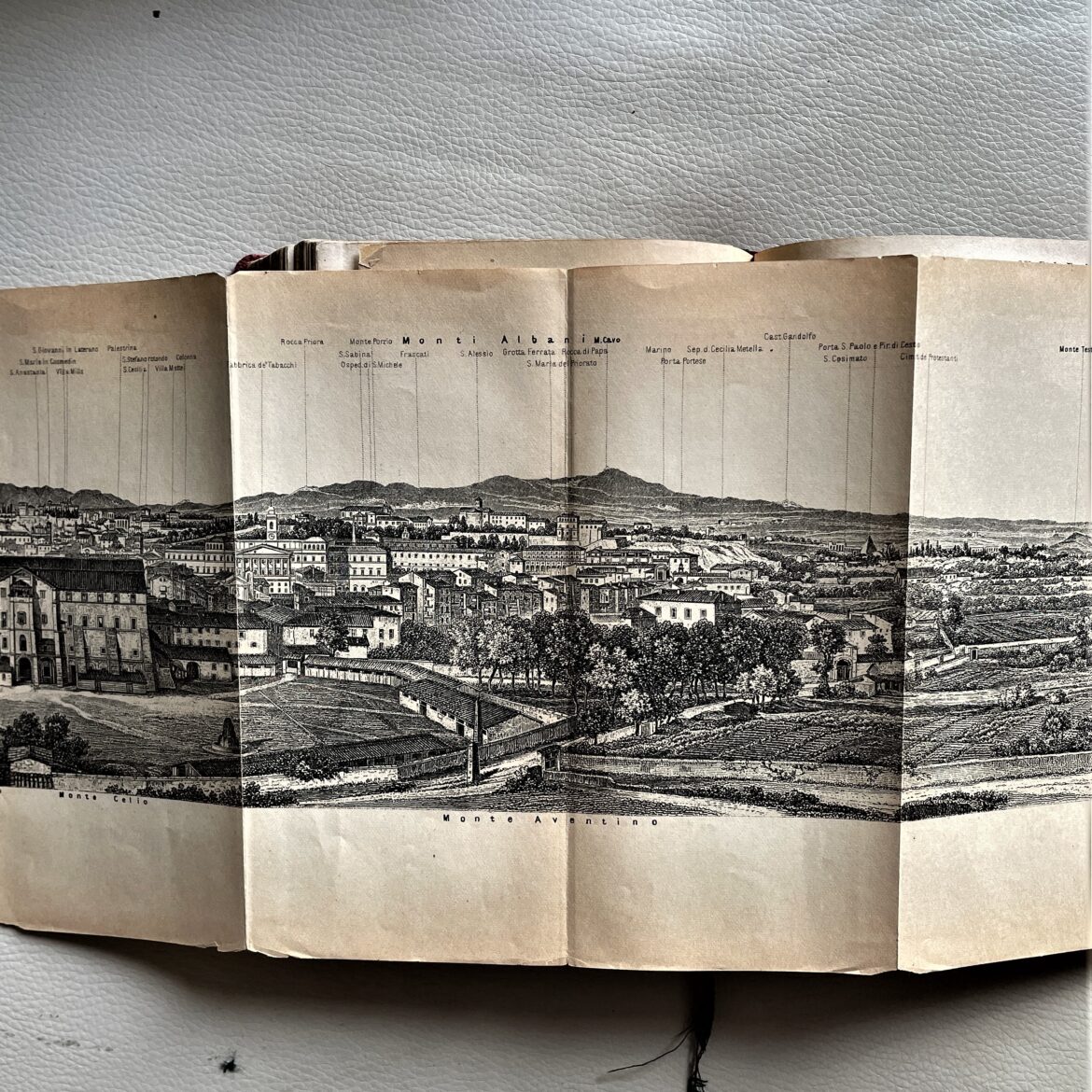
Much is the same but much is different as archeologists continue to explore and dig up new treasures seemingly weekly. It’s hard to believe that the Forum was known as the “Campo Vaccino,” or “cattle field” and was essentially an overgrown, neglected field and wasn’t fully excavated until around the time of this guide.

The other guide is the 1959 first English Edition of the Michelin Guide to Italy that someone bought in Cannes, France. Along with history and the still-used green cover and star ratings for sights not to be missed, this guide seeks to help the possibly bewildered British tourist with helpful information that the Italian is “dark-eyed, gesticulating, nimble and passionate, all movement and fantasy.” Also, the town square is a good place to watch their behavior except in the South where it’s best not to look anyone in the eye.

Other advice includes the admonition that bikinis should only be worn at the smartest resorts, to use your horn liberally when driving, and my favorite, don’t chop up your spaghetti. Instead, try to wind it on a fork while praying that it doesn’t fall into the sauce.
The third guide isn’t one for Italy but rather for Ethiopia (along with Eritrea and Somalia), a country Mussolini invaded in an effort to expand his short-lived colonial empire. The book, Guide to Italian East Africa, was published by the Italian Tourist Association in 1938, year XVI of Mussolini’s dictatorship. A proclamation on the first page states the King of Italy was now the Emperor of Ethiopia. The 490,000 copies printed were free as if the government expected thousands of tourists to catch a boat for a holiday in the colonies. In reality, Mussolini’s invasion of 1935 had settled into a guerrilla war.
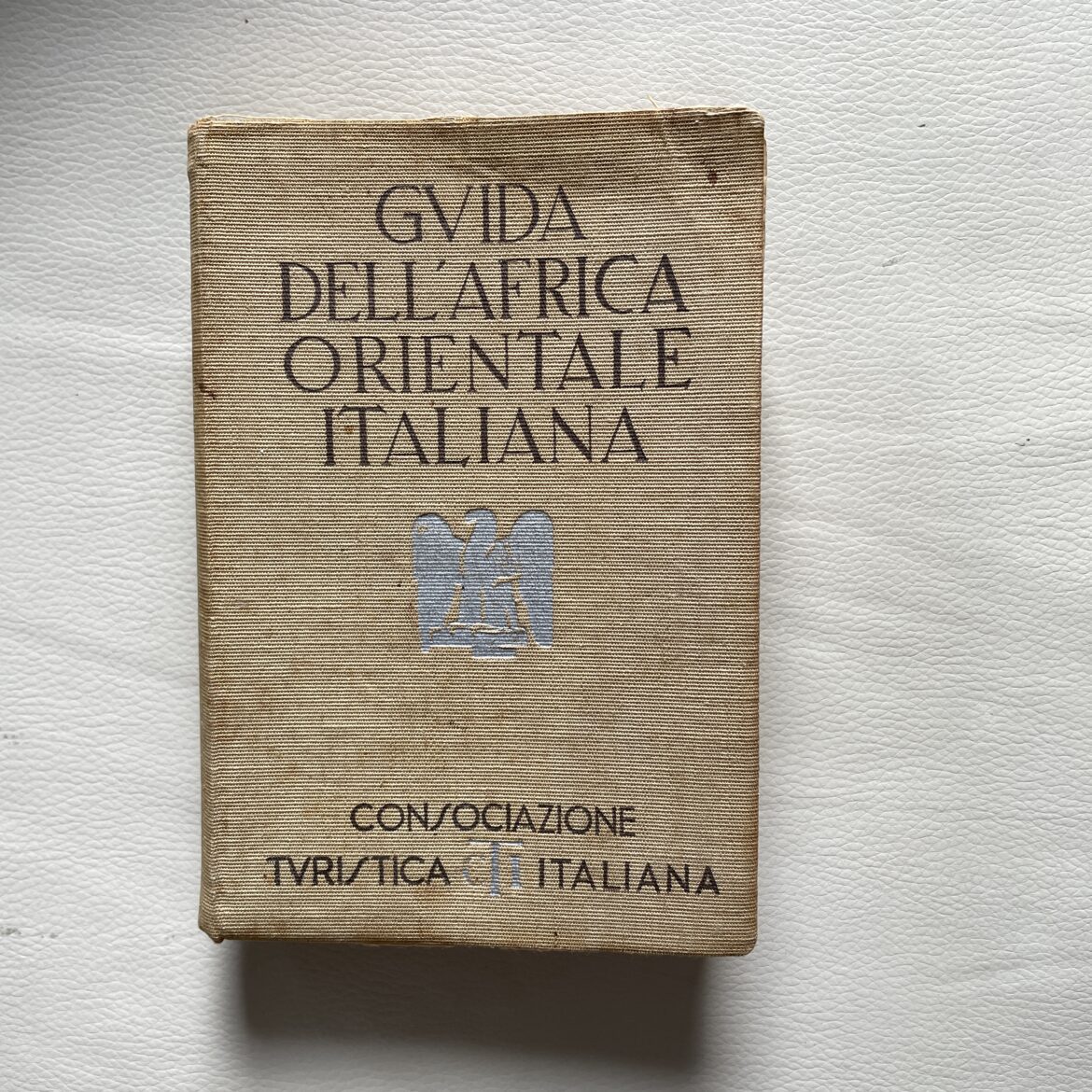
The guide, with the fascist eagle on the cover, is 622 pages of fine print with description of sites and history along with finely-detailed maps. Major streets and roads were renamed in honor of Mussolini, the King and Queen along with other officials. I know now that Axum was occupied on 14 October 1935 and 87 Italians lived there. But surely few tourists actually wandered in the hinterlands with their yellow guide in hand.
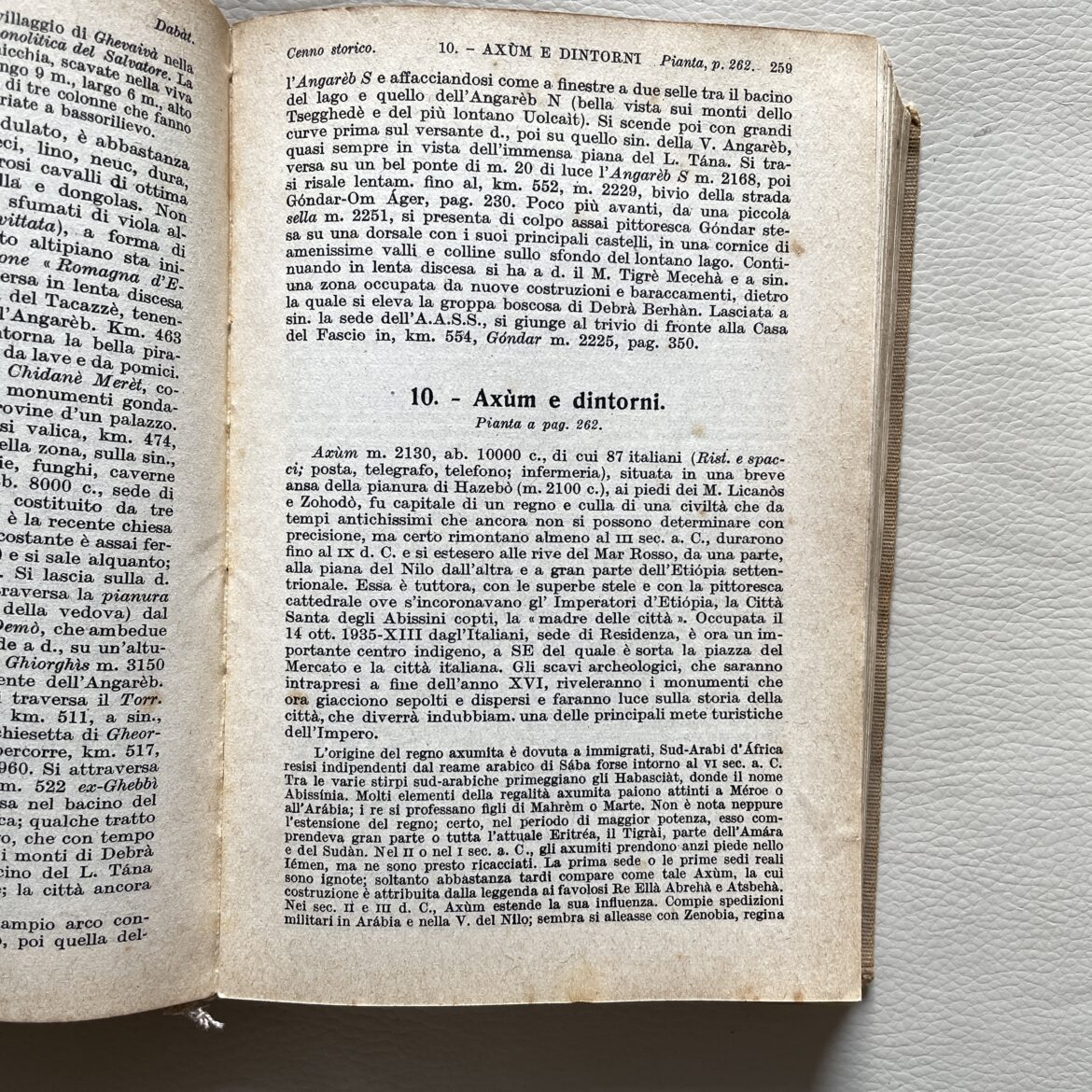
(For a good read about this period and the guerrilla war, I recommend The Shadow King by Maaza Mengiste. It focuses on women’s role in the fight against the occupiers.)
The reason I snatched up the guide at an antiquarian book fair in Seattle (how did it get there I wonder?) is that I worked for Food & Agriculture Organization of the United Nations in Rome at one time. The building, across from the Circus Maximus, was formerly the administrative headquarters of the Italian Empire and there was an obelisk looted from the holy city of Axum on the grounds. (That obelisk is important enough to have its own Wikipedia page.) I saw it every day when arriving at work and it served as a meeting point for workers and tourists alike. It was finally returned to Ethiopia in 2005.
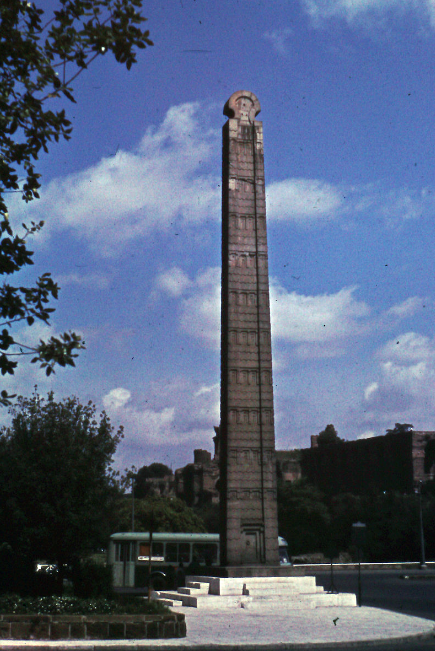
All tourism bureaus can be accused of promotional overreach or suffer from the prejudices of their authors and the times. But that’s why old guidebooks are so interesting. On my next trip to Rome, I’ll be careful with eating my spaghetti while I look for a nimble and passionate Italian even though the obelisk is gone!
All photographs are copyright Judith Works except that of the obelisk which is from Wikipedia Commons. Photographer is Ondrej Zvacek.

